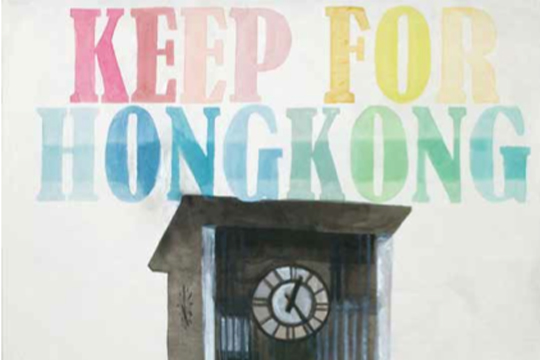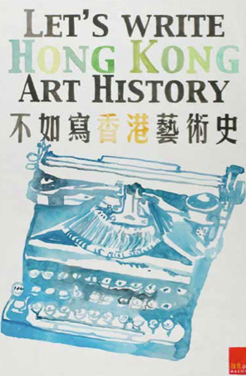REORIENTING HONG KONG: BETWEEN THE LEGACIES OF COLONY AND NATION
| May 20, 2013 | Post In LEAP 20

TWO SEEDS WERE planted in Hong Kong back at the time of its inception: a seed of prosperity and a seed of subjectivity. The meaning of prosperity requires no elaboration here. Subjectivity, in this context, means self-awareness in culture and identity.
Back in the late nineteenth century, Hong Kong’s prosperity endured fits and starts, but eventually it proved to be unstoppable. Imperial disintegration, East-West antagonism, and the turmoil of two World Wars somehow served only to bring Hong Kong more economic opportunity and ambition. In the late-twentieth century, as Hong Kong approached the pinnacle of its prosperity, it received a series of labels associated with the creation of wealth: colony, free port, shopping heaven, Pearl of the East, and so on. In comparison, the seed of subjectivity took much longer to sprout. This was largely because achieving prosperity does not require subjective awareness, whereas the buds of subjectivity require not only fecund soil but also the trauma of independence and the decision to reflect upon history.
Any discussion of Hong Kong’s subjective orientation necessitates consideration of the historic nature of the territory’s parentage. Observation from the perspective of the parent has two aspects as well. The first is the Western view of Hong Kong’s history, or, more precisely, the Anglocentric view, which is tied to the modernization process of all of Asia. The global dissemination of modernity, as conceived in the West in the nineteenth century, can be seen as the starting point of the present global epoch. Tracing this phenomenon back to its source is necessary in order to analyze how Hong Kong rose from a small island in the Qing Dynasty to the Asian jewel of global capitalism over the course of one short century. The second aspect comes from Hong Kong’s pre-colonial motherland and the arduous fight to establish a new China, as well as the history of the territory’s relinquishment and return, through which it became the ultimate symbol of a century of national rebuilding. In 1997, Hong Kong broke free form its colonial suzerain. The narrative of its return to the motherland is richly metaphorical. First of all, returning can be seen as an act of allegiance to historical, cultural, and ancestral ties to China. Moreover, the Handover was a rejection of a century of colonial history. The framework of nation replaced the framework of colony.
The intertwined Eastern and Western aspects of Hong Kong’s history jointly mold its subjectivity and inevitably contribute an element of contra- diction. Simply put, the conflict and resolution between nation and colony produced a deeply perplexing prosperity and subjective identity. If, from a historical perspective, the colonists brought prosperity, then this came with the price of a lack of subjectivity. But in its transition from colonial background to national framework, Hong Kong never fully realized the political intention to return; rather, the process allowed the city’s subjective awareness to emerge. At the 2010 Shanghai World Expo, the massive China pavilion put national stature on outward display. Squatting beside it, the Hong Kong and Macau pavilion provided a sharp contrast. The emotional conflict between Hong Kong and the Mainland grows stronger by the day, leading many to ponder its origins.
A cursory glance at the history of Hong Kong supports the cultural lag theory of the dissemination of modernity. This theory designates economic prosperity as a prerequisite for cultural self-awareness. Since the nineteenth century, the phenomenon has recurred throughout the colonial world, forming a stark contrast to the rise of the nation-state, and in particular, China, which adopted nationalism as part of its political and cultural core. Leaving aside for the moment the historical background of Hong Kong capitalism and Chinese socialism, the central difference between the two models lies in cultural self-awareness. In the Hong Kong example, economic prosperity was a prerequisite for subjectivity, not vice-versa. Cultural matters are another story entirely. Here we can sort culture into two types. The first type is culture with the purpose of a self-aware independence, exemplified by the nationalistic culture of Mainland China. The second type is culture without subject. The difference lies in how the subjective identity creates cultural patterns. Cultural self- awareness is the product of a self-aware subjective identity. Thus we can answer that age-old question: did colonial Hong Kong have culture? Obviously, the participation of subjective awareness lies behind this line of questioning. Subjective culture will always stand in opposition to ideology. When culture is embedded in the state of conflict between subjects, from the perspective of cultural concepts that take the political and essential viewpoint as subject, Hong Kong certainly can be seen as cultureless. Though it has cultural production, Hong Kong can only possess certain inessential cultural features of urban customs and practices: a culture with no subject.

Historical hypothesis may be the best way to delineate cultural orientation. Imagine that Hong Kong did not return to China in 1997, but rather, in 1967, that it was reclaimed by the Red Mainland. Overzealous Red Guards may well have renamed it “The People’s Harbor” (the name Hong Kong in Chinese means “Fragrant Harbor). The hypothetical People’s Harbor suggests the possibility of a cultural transformation and a subjective orientation that produced cultural difference. Above all, it indicates a unity of subject, culture, and system. This historically hypothetical cultural orientation reveals the contradictory nature of colony and nation in matters of culture. With globalization in the back- ground, Hong Kong, as a cultural locale, has effectively blended free market capitalism with popular Chinese traditions over the past decades. It has derived and created an extremely rich popular culture that has incorporated Hollywood cinema and kung fu movies to become a component of global culture. Furthermore, the national framework has provided Hong Kong with the meta-narratives of Mainland culture, which still essentially center on national imagination and the power of state capital. As economic globalization has led to cultural globalization, nation-based cultural models have faced growing challenges. Chinese contemporary art of the past two decades can be seen as an offshoot of national Chinese culture that has fallen subject to the magnetic lure of globalization. Of course, the dynamic nature of contemporary art has correspondingly influenced contemporary national Chinese culture, lending increasing ambiguity to its subjective and national orientation.
Returning to the question of how to view Hong Kong, it is fortunate that the cultural stage in which extroversion and introversion are sharply distinct has already passed. Today’s Hong Kong faces historic opportunities and challenges in the realm of culture. The legacy of colonial rule following the withdrawal of colonial power still exercises an incomparable influence. Under various historical circumstances— whether the Cold War divide of years past or the present trend of global circulation— Hong Kong’s prosperity has benefited from “duty free.” Duty free sales, a condition granted to Hong Kong by the colonial regime, provided the territory with advantages in the circulation of goods, services, and financing. Today, these advantages are employed by corporate capital (in Chattopadhyay’s words) to shape Hong Kong’s cultural status. This model forms an interesting contrast with the Mainland Chinese method of forming culture through the mobilization of state capital.
Between colony and nation, issues of culture and subject remain. In new circumstances, it seems to us that Hong Kong should reorient itself in a subjective perspective. Perhaps today’s Hong Kong should become one of David Harvey’s so-called rebel cities— a city greater than its country— like nineteenth-century Budapest or twentieth-century Singapore. This implies that Hong Kong, previously a duty-free colonial harbor, must be more than the not-quite-successful national harbor it is today. Hong Kong faces a temporary predicament in which it must once again decide how to reshape its culture. In the post-Cold War era, as ideological conflict has evolved from public confrontation into hid- den opposition, we can be certain that the destiny of cultural production in the free market capitalist system is already fixed. The cultural compass will continue to direct Hong Kong toward the world beyond China. In this way, Hong Kong can transform itself from a Cold War harbor of economic freedom into a modern harbor of cultural freedom. So we can optimistically predict that Hong Kong will finally attain cultural prosperity over the course of regional cultural developments in the new century.
In this way Hong Kong culture will become self-aware— depending, of course, on the maturation of the subjective awareness of the Hong Kong people. (Translation by Daniel Nieh)

